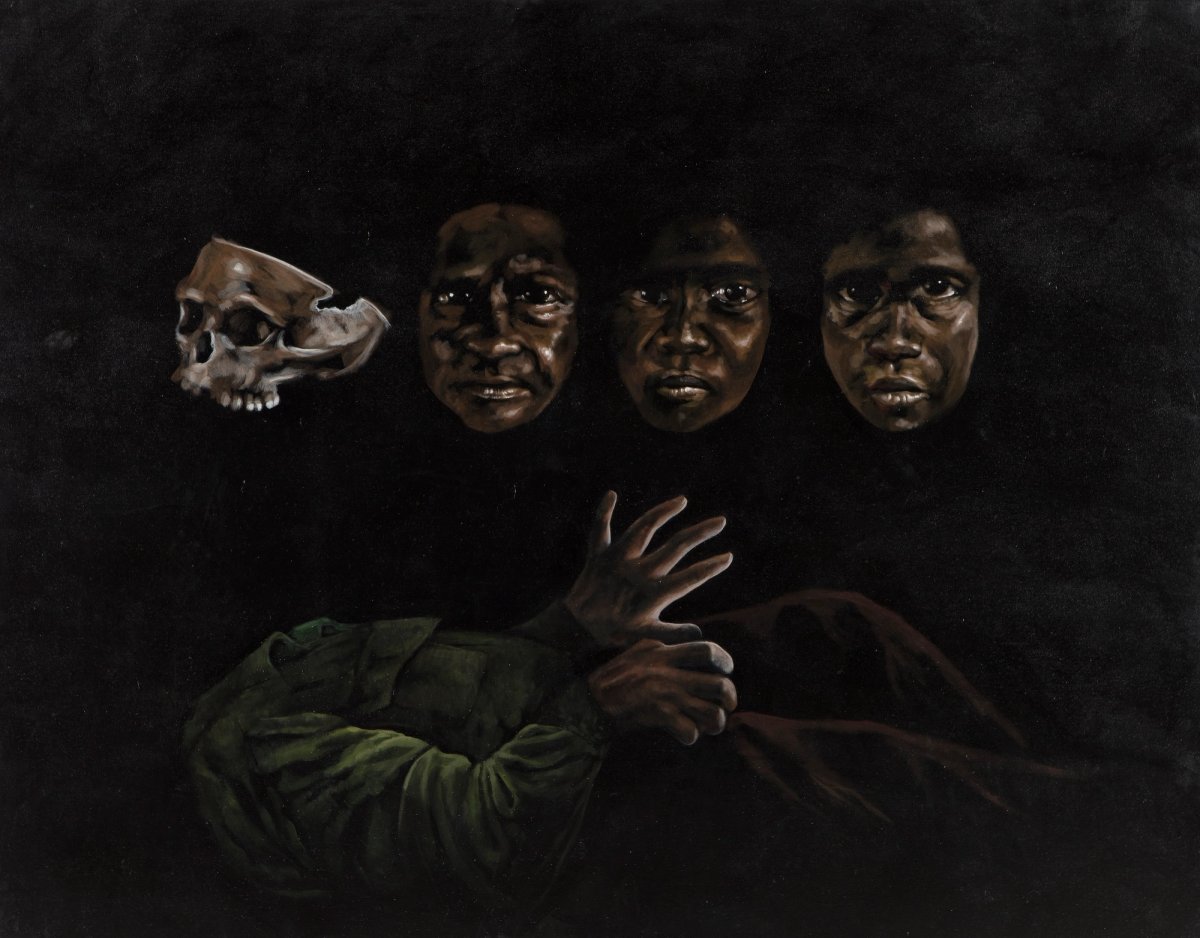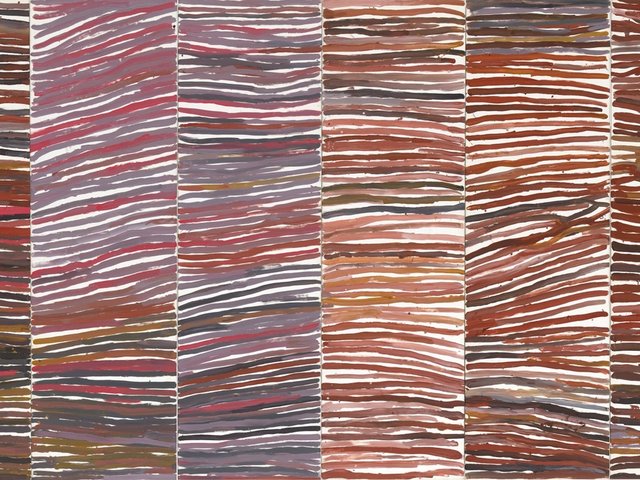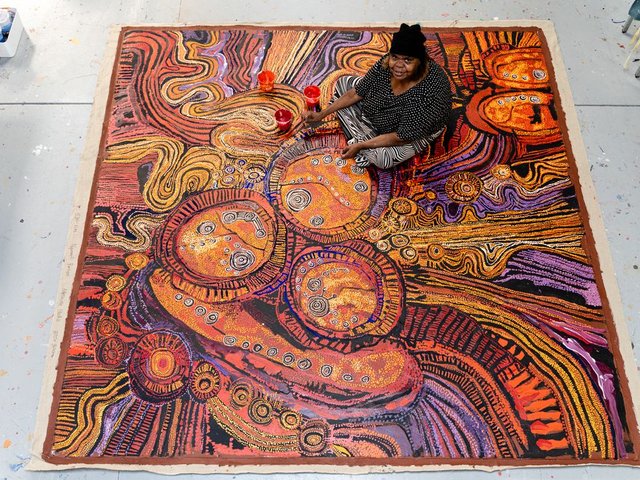Indigenous Australian artists were leading innovators at key stages in the postcolonial development of what is now a celebrated art movement. Now, in an exhibition opening at Melbourne University’s Potter Museum of Art on 30 May, their contributions will be celebrated.
Ironically titled 65,000 Years: A Short History of Australian Art, the exhibition’s curatorial platform is that Indigenous Australian art dates back for millennia before European settlement in 1788, but only escaped the confines of its belittling ethnographic pigeonhole in the 1980s.
Co-curator Judith Ryan, the former senior curator of Indigenous art at the National Gallery of Victoria, says that Indigenous people today would be rightly “outraged” that their art has taken so long to be accepted into the fine art canon. “The failure to recognise Aboriginal and Torres Strait Islander visual culture as art is closely tied to the fact that the original inhabitants of Australia were not counted in the census until 1967,” Ryan told The Art Newspaper.
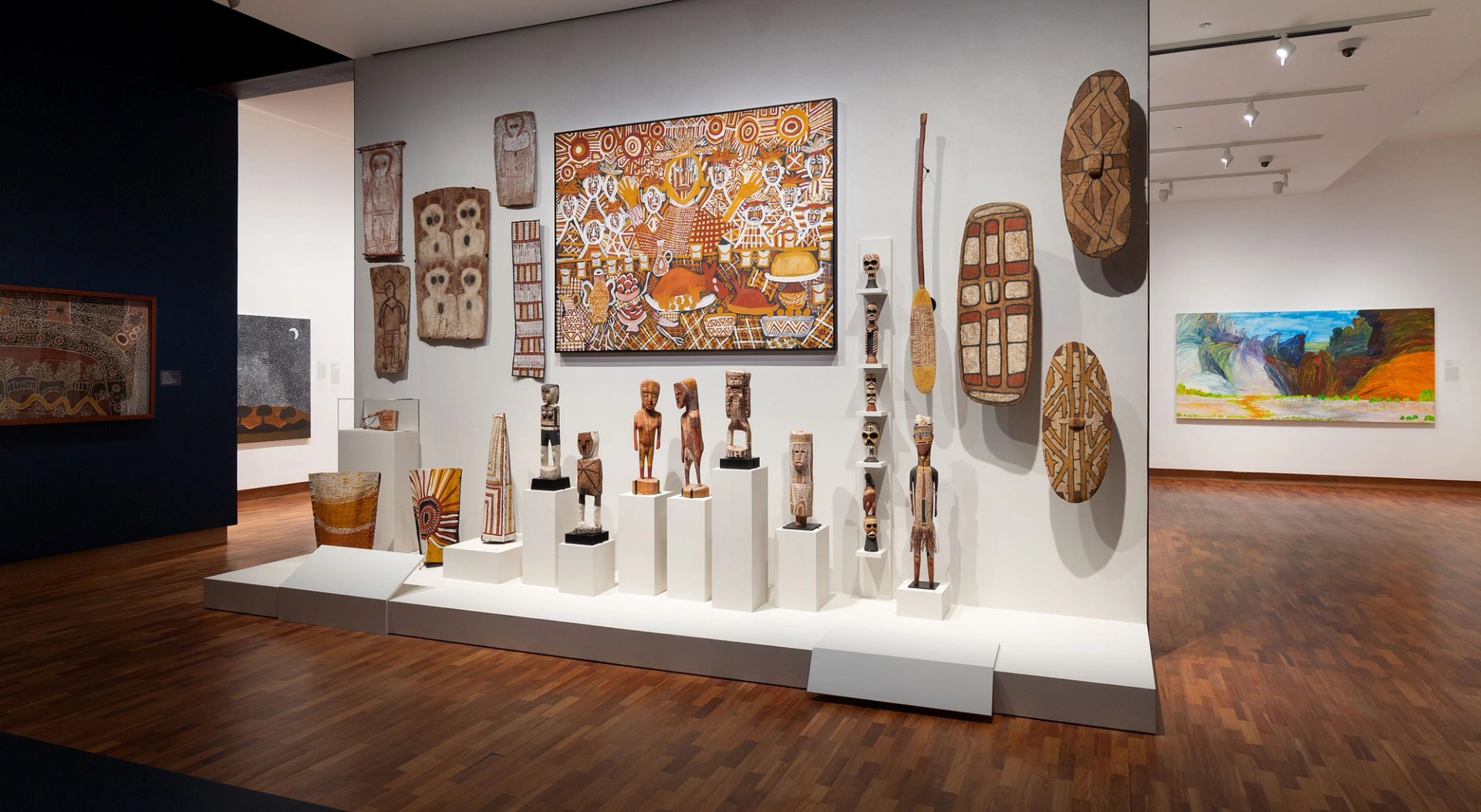
Indigenous Australian people “probably find it absurd” that it took so long for their art to be hung in galleries, says the exhibition's co-curator
Installation view of 65,000 Years: A Short History of Australian Art. Photography by Christian Capurro
“So, if First People were not regarded as fully human, how could they make works of art?...First People in Australia would have been outraged by this denial of the importance of their art just as they would have been angered by the denial of their basic human rights.
“I think that in this exhibition, we reveal that these two instances of racist disrespect are very closely interconnected.”
Architects of change
Ryan says that 65,000 Years: A Short History of Australian Art celebrates the uniqueness of Australian Indigenous art. “We are going back to give time to those artists that have built a situation where, for Aboriginal people today, if they want to be artists, there is a much greater reception,” she explains.
Those who did what Ryan describes as the early “heavy lifting” in this respect include frontier artists Tommy McRae (c.1835-1901), William Barak (c.1823-1903) and Mickey of Ulladulla (c.1820-1891). More recent “architects of change” include Indigenous Australian photographers Ricky Maynard, Naomi Hobson and Destiny Deacon.
Ryan says that exhibition curators also worked to address the “scientific racism” of eugenics once practised at the University of Melbourne. “Things such as the White Australia Policy, segregation in the cinema, the assimilation movement, the stolen generations, the over-incarceration of Aboriginal people, black deaths in custody, is all connected to the way that this country was invaded and colonised, and we are not yet finished with it,” Ryan says.
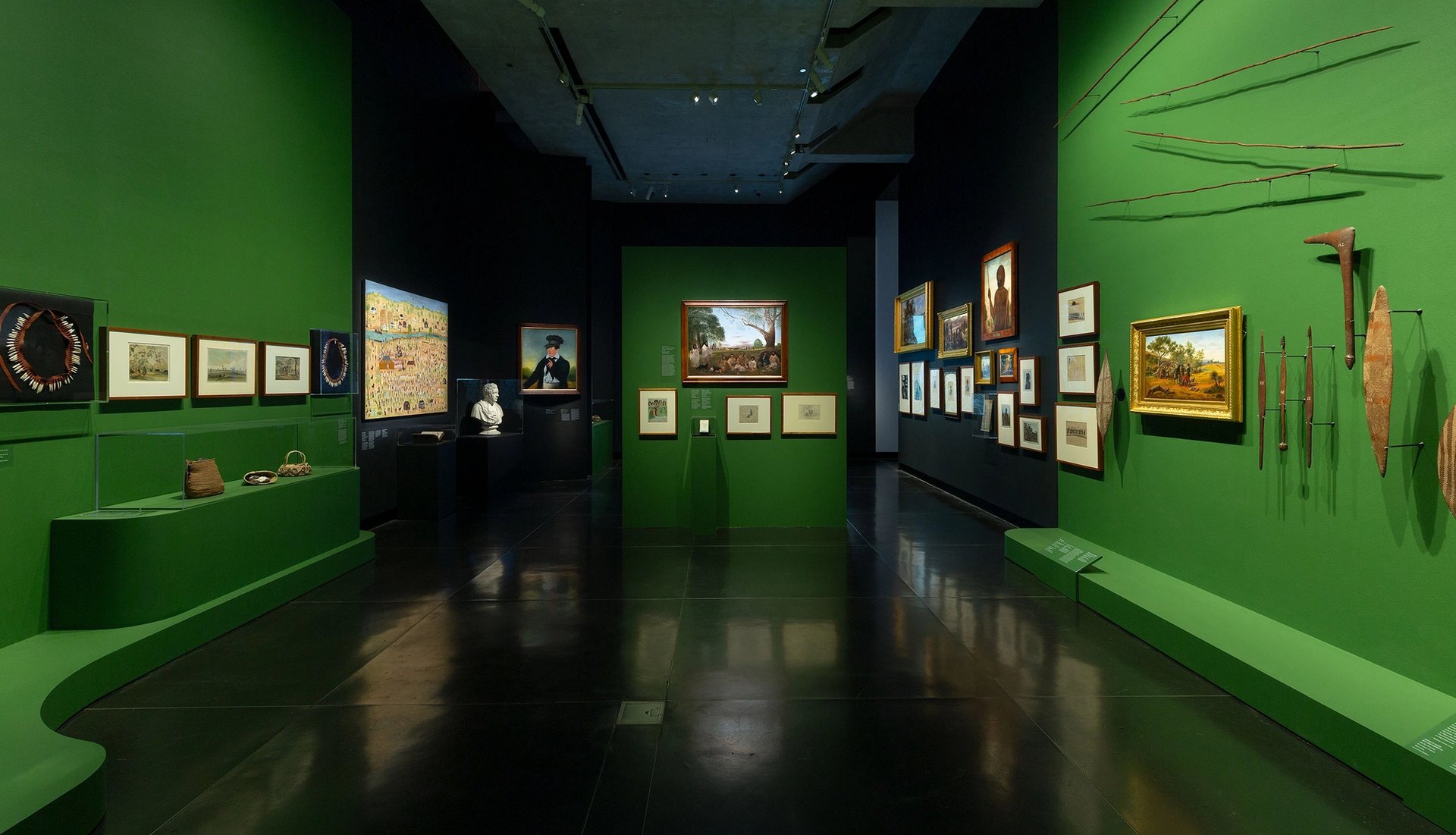
“Superficial art critics” often miss the underlying ritual significance of Indigenous artworks, says the exhibitions co-curator
Installation view of 65,000 Years: A Short History of Australian Art. Photography by Christian Capurro
“Superficial art critics”
The curator explains that while Indigenous Australian people “probably find it absurd” that it took so long for their art to be hung in galleries, leading Aboriginal artists have loved to see the work of other cultures in art galleries.
“Rover Thomas was thrilled to see the work of Rothko, for example,” Ryan says. “John Mawurndjul loved seeing the Cubist works of Picasso and Braque in Europe.”
Co-curator of 65,000 Years: A Short History of Australian Art, Indigenous academic Marcia Langton, says it is still a shock for Indigenous Australians to realise “how little other Australians know about us”. Langton, Foundation Chair of Australian Indigenous Studies at the University of Melbourne, says there has been a long tradition of Indigenous people trying to explain to colonisers that they already had their own spirituality and customs.
Despite this, she explains that “superficial art critics” often miss the underlying ritual significance of Indigenous artworks and ceremonial objects, and few art historians are willing to spend long periods of time in remote outback communities where much of the contemporary art is made.
- 65,000 Years: A Short History of Australian Art, Potter Museum of Art, the University of Melbourne, 30 May-23 November


